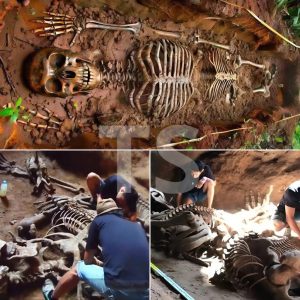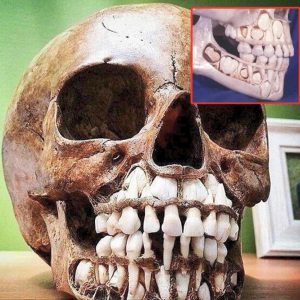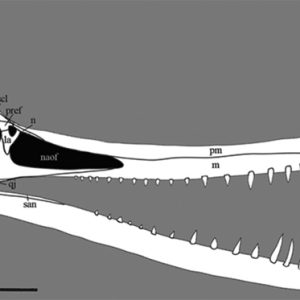Archaeologists have unearthed a rich assemblage of human-accumulated terrestrial and marine faunal remains, including those of several crab species, in Gruta da Figueira Brava, a cave in Portugal that was inhabited by Neanderthals around 90,000 years ago. The detailed analysis of the crab remains reveals that complete animals were brought to the site, where they were roasted on coals and then cracked open to access the flesh.

Nabais et al. present a detailed study of the crab component of the Neanderthal diet as revealed by the evidence from the Portuguese cave site of Gruta da Figueira Brava.
“At the end of the Last Interglacial, Neanderthals regularly harvested large brown crabs,” said Dr. Mariana Nabais, an archaeologist at the Catalan Institute of Human Paleoecology and Social Evolution.
“They were taking them in pools of the nearby rocky coast, targeting adult animals with an average carapace width of 16 cm.”
“The animals were brought whole to the cave, where they were roasted on coals and then eaten.”
In their study, Dr. Nabais and colleagues examined a rich Middle Paleolithic marine crustacean assemblage — overwhelmingly represented by brown crabs (Cancer pagurus) — from the Portuguese cave site of Gruta da Figueira Brava, which is located about 30 km south of Lisbon.
The size of the crabs in the assemblage was estimated by calculating the size of their carapace relative to their pincers, which preserve better than other parts of the animal, so are more likely to survive to be found by scientists.
The archeologists assessed the breakage on the shells, looked for butchery or percussion marks, and determined whether the crabs had been exposed to high heat.
They found that the crabs were mostly large adults which would yield about 200 g of meat.
By studying the patterns of damage on the shells and claws, they ruled out the involvement of other predators: there were no carnivore or rodent marks, and the patterns of breakage didn’t reflect predation by birds.
Crabs are evasive, but Neanderthals could have harvested brown crabs of this size from low tide pools in the summer.
Accumulations of shellfish which are caused by hominins are identified by their association with stone tools and other hominin-made features like hearths, surface modifications like the burns found on approximately 8% of the crab shells, and evidence of intentional fractures.
The fracture patterns on the crabs at Gruta de Figueira Brava suggested they’d been broken open for access to the meat.
The expectation is also that larger individuals will be overrepresented, as at Gruta de Figueira Brava, reflecting hominins choosing animals which offer more meat.

Crustaceans from Gruta da Figueira Brava, Portugal: (A) Perforatus perforatus; (B) Cancer pagurus carapace and pincer fragments with black burns; (C) Cancer pagurus dactylopoda showing impact flakes on their ventral proximal side, reflecting pincer disarticulation; (D) Cancer pagurus pincers with longitudinal breaks. Image credit: Nabais et al., doi: 10.3389/fearc.2023.1097815.
The evidence also indicated that Neanderthals weren’t just harvesting the crabs, they were roasting them.
The black burns on the shells, compared to studies of other mollusks heated at specific temperatures, showed that the crabs were heated at about 300-500 degrees Celsius, typical for cooking.
“Together with the associated evidence for the large-scale consumption of limpets, mussels, clams, and a range of fish, our data falsify the notion that marine foods played a major role in the emergence of putatively superior cognitive abilities among early modern human populations of sub-Saharan Africa,” Dr. Nabais said.
“The notion of the Neanderthals as top-level carnivores living off large herbivores of the steppe-tundra is extremely biased,” she added.
“Such views may well apply to some extent to the Neanderthal populations of Ice Age Europe’s periglacial belt, but not to those living in the southern peninsulas — and these southern peninsulas are where most of the continent’s humans lived all through the Paleolithic, before, during and after the Neanderthals.”
A paper on the findings appears in the journal Frontiers in Environmental Archaeology.





